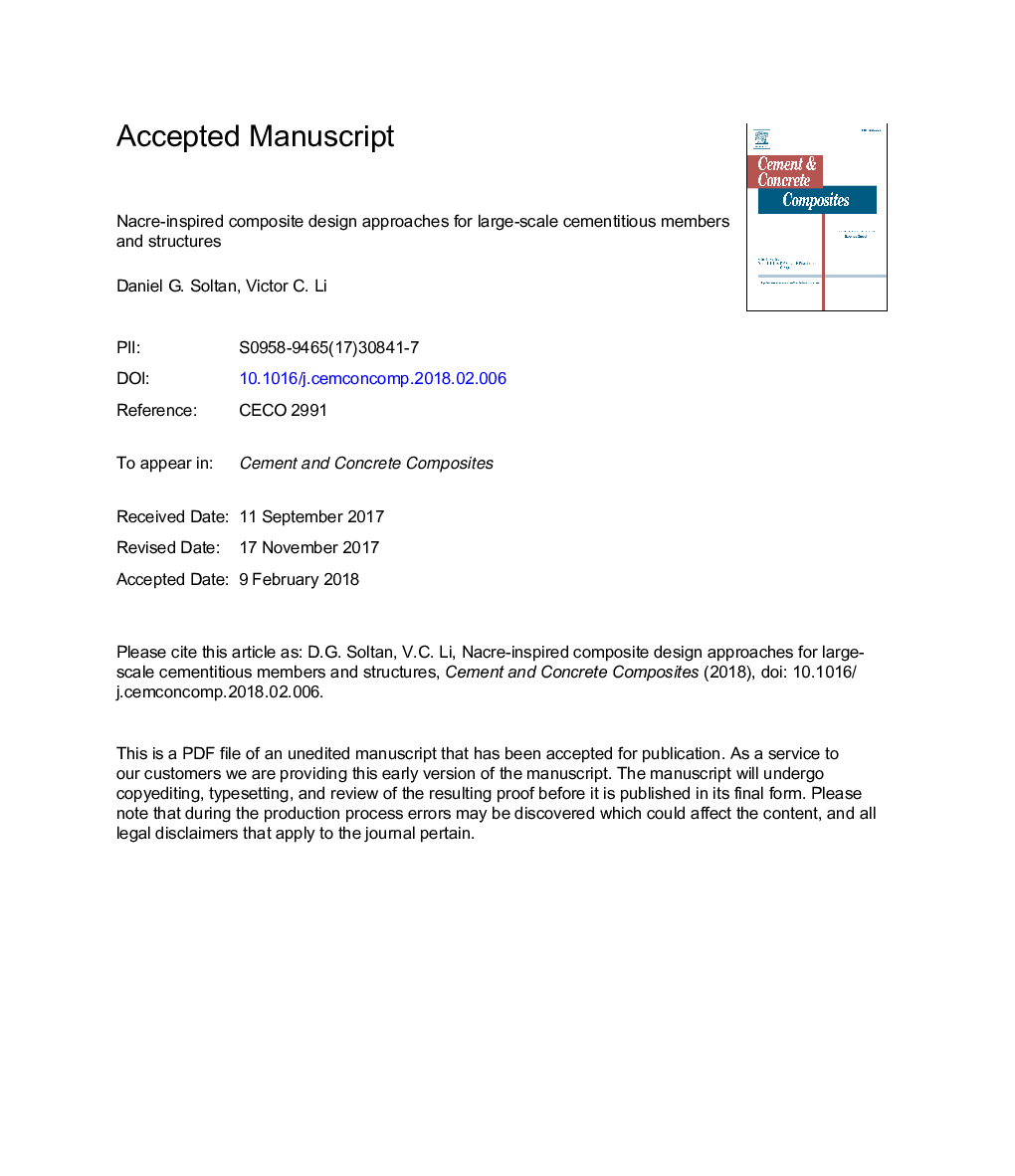| Article ID | Journal | Published Year | Pages | File Type |
|---|---|---|---|---|
| 7883916 | Cement and Concrete Composites | 2018 | 47 Pages |
Abstract
Nacre boasts a remarkable mechanical property profile, despite being composed 95% of a chalk-like mineral. Previous research has reported the features and deformation mechanisms responsible, inspiring many synthetic, biomimetic versions of nacre. However, due to processing challenges associated with nacre's complex structure, this composite design inspiration has not been applied on a scale useful for civil engineering applications. This research investigates the utility of nacre's composite design on a scale relevant to infrastructure by exploiting the “distributed microcracking” behavior of strain-hardening cementitious composites (SHCCs). With the goal of emulating nacre's deformation mechanisms, rather than simply structural mimicry, various design approaches within the constraints of construction practices are introduced and evaluated in direct tension and beam bending. An alternating layering scheme, using a geotextile mesh and a high strength SHCC, is seen to produce promising behavior, significantly outperforming the high strength SHCC in its monolithic form. Advantages are seen in tension, compression, and particularly flexure. The deformation mechanisms responsible for this enhanced performance, and those of alternate approaches, are discussed.
Keywords
Related Topics
Physical Sciences and Engineering
Engineering
Industrial and Manufacturing Engineering
Authors
Daniel G. Soltan, Victor C. Li,
